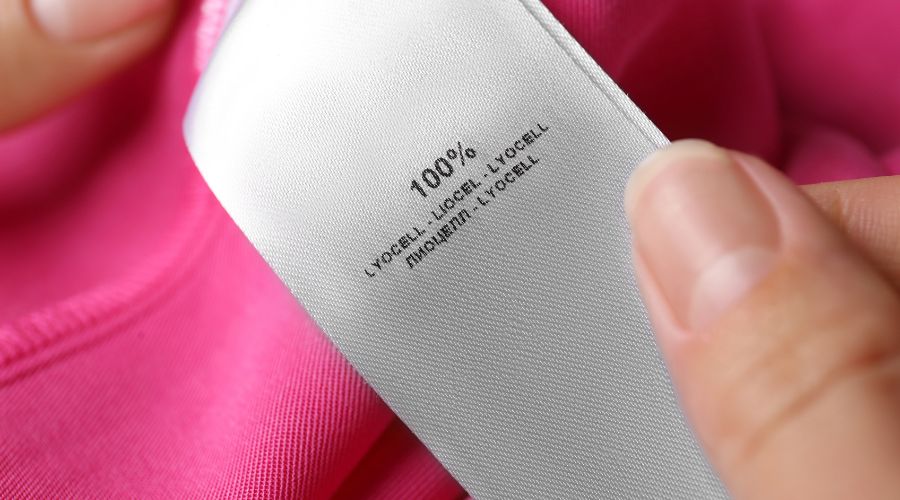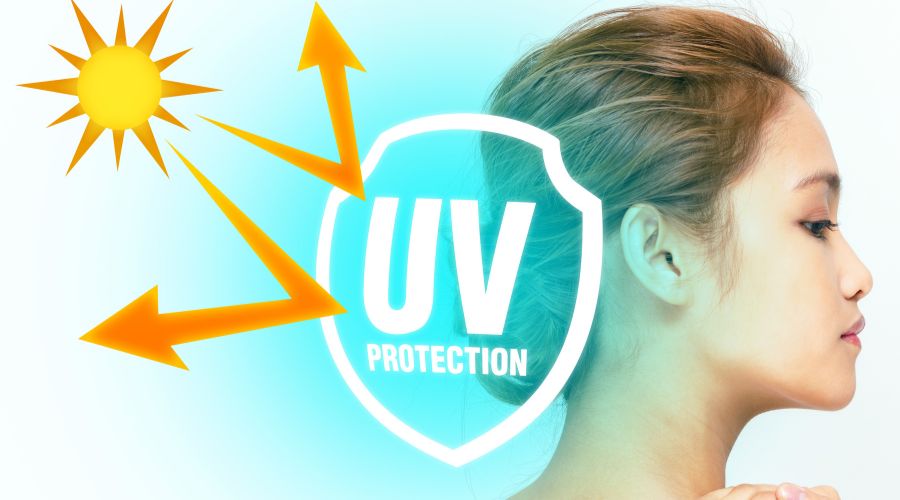
If this is your first rodeo in eco-friendly fashion, navigating the slow fashion world might be a struggle. You grew up hearing only about wool, cotton, silk, and nylon. Now we’re talking about lyocell fabric. What the heck is that?
Don’t worry; we’ve all been there.
Eco-friendly fabrics like Lyocell are pretty popular today. In many ways, lyocell fabric lives up to the hype. It’s soft, light, breathable, and comfortable.
The real question is: is Lyocell sustainable? Let’s find out together.
New to eco-friendly fabrics? Check out our guide to the best bamboo clothing brands.
What is Lyocell Fibric?
If you’ve never heard of it, you might wonder, ‘What is lyocell fabric?’ Lyocell fabric is a semi-synthetic fiber or, to put it more technically, it’s a processed cellulosic fiber. Alongside organic cotton, hemp, and bamboo, Lyocell is a lauded fabric in the slow fashion sector.
In a world where trends come and go faster than ever, environmentally conscious buyers want sustainably and ethically produced fabrics. Lyocell fabric caught everyone’s attention by seemingly doing that and feeling great on your skin.
What Is Lyocell Made From?
Lyocell fabric is made from wood pulp. The pulp is harvested from fast-growing trees that don’t require irrigation and pesticides. Such trees include eucalyptus trees, bamboo, birch, and oak wood. These trees are often grown on land unsuited for other agricultural uses.
The fabric is made from plant-based material, so it could be considered a natural fabric like hemp and cotton. However, the process used to create fibers from wood brings Lyocell closer to polyester and nylon. This is why Lyocell is considered semi-synthetic. It is neither entirely organic nor synthetic.
How Is Lyocell Made?
To make fiber from the wood pulp, the wood is harvested and debarked using high-pressure water jets. Then it’s chopped into wood chips the size of stamps. Chemical digesters are used to soak the pulp until it softens. The pulp is then dried and spread into sheets of cellulose.
The cellulose sheets are broken into small squares before soaking in amine oxide. After some time, the cellulose dissolves into a clear solution. The liquid is then forced through spinnerets containing small holes to form long fiber strands.
Lyocell Fabric Pros & Cons
Now you know what Lyocell is and how it’s made. The real question is, what’s with all the fuss surrounding the fabric? Why does it have so many diehard supporters and some detractors? Let’s go over it together.
Advantages of Lyocell
Here are a few reasons why people love Lyocell:
- Ecofriendly: This is the biggest advantage of lyocell fabric. Lyocell has a mostly positive impact on the environment compared to other materials. The fiber comes from sources grown in sustainably managed forests. The hardwood trees used to make the fiber are fast-growing and require no pesticide. They also use significantly less water compared to plants like cotton. Even the solvents used to create the fibers are less toxic than traditional chemical solvents. They can be reused in a closed-loop environment, meaning they don’t get dumped or cling to the fibers.
- Biodegradable: Lyocell is made from plant-based sources using non-toxic chemicals. This means that, like other plant-based fibers, Lyocell can biodegrade in the right conditions. Essentially, lyocell clothes don’t end up spending years in landfills.
- Efficient: The fabric is quickly and efficiently manufactured in factories. The trees grow fast, and harvesting the wood and turning it into the fiber can take up to three hours. That’s faster than producing polyester or making wool into yarn. The speed is part of the reason the production saves on resources even with high fiber yields. So, if slow fashion is too slow for you, Lyocell is still an excellent alternative to conventional fabrics.
- Breathability: Lyocell fabrics are very breathable. They can help regulate your body temperature. Lyocell being breathable also makes it more hygienic than other fabrics. Thanks to its breathability, the fabric is unlikely to harbor bacteria that thrive in unbreathable environments. This means that your clothes are less likely to stink and become musty. This makes Lyocell great for gym clothes.
- Moisture wicking: One thing lyocell fibers are good at is absorbing moisture. That’s because the tiny fibers are hydrophilic. You can sweat or live in highly humid areas and remain dry and comfy. Lyocell is, therefore, used for bed sheets, towels, and, if you’re an eco-warrior parent, diaper inserts.
- Durability: Lyocell might be made of fine strands, but it’s tough. It lasts long, can stretch, and is very strong. Somehow, the fabric remains strong even while wet. This is why it’s used to make activewear, conveyor belts, and safety equipment.
- Soft: Despite its strength, Lyocell is incredibly smooth. It feels very soft on your skin, so it’s used to make sateen sheets and towels. If you have sensitive skin, clothes made from lyocell material are what you need.
- Blends with other fabrics: You can easily make an entire outfit with just lyocell fabric, but if you want to blend it with different materials, you’re in luck. Lyocell blends well. Blend it with silk for a smoother finish or nylon for extra durability. Regardless, you’re dealing with one hell of a versatile fabric.
- Easily absorbs dyes: Half the fun of wearing clothes is the color. Luckily, Lyocell takes easily to dyes. The fabric is very absorbent, and you don’t need to treat it with chemicals before dyeing. You can easily use non-toxic dyes to make a fantastic colorful cloth.
- UV protection: UV damage is no joke. Sometimes wearing sunscreen on only the exposed part of your skin isn’t enough because UV rays can get through the fibers. Fortunately, some versions of Lyocell can provide UV protection.

Some versions of Lyocell can provide UV protection
Disadvantages of Lyocell
While Lyocell has incredible benefits, it also has a couple of drawbacks, including:
- It’s expensive: Lyocell can be a bit costly, unlike mass-produced fibers. The reason is simple; you need specific technology to make the fibers. Most brands making lyocell clothes go out of their way to sustainably source their materials. There isn’t a lot of cost-cutting or shortcuts like in conventional manufacturing. Many eco-friendly brands make sure workers aren’t exploited during the process of production. That adds up to the price of the clothes. Thanks to the durability of Lyocell, you might save money in the long term.
- Requires special care: Lyocell might be strong and durable but also delicate. The fabric can take damage from heat and rough use. It needs special care. You can’t use a hot iron on the material, for example. You have to use low heat and use a pressing cloth. 100% lyocell fiber clothes are best washed by hand using a gentle soap. Don’t even think about wringing the clothes dry. There are so many rules to follow even with blended lyocell clothes. It can feel too fussy for some people.
- Not fully compostable: Remember how we mentioned Lyocell is biodegradable? That comes with a caveat. Lyocell blended with synthetic fibers like polyester, acrylic, nylon, and spandex won’t be fully compostable.
- High energy consumption: We’ve talked about how Lyocell doesn’t use a lot of water, chemicals, or land, but it does consume one resource a lot, and that’s energy. Turning hardwood into fabrics might be quick and efficient, but it consumes high energy.
- Greenwashing: Unfortunately, when it comes to eco-friendliness, you can’t trust everything you hear. Lyocell, or the marketing of lyocell products, is susceptible to greenwashing. Greenwashing is when corporations, governments, or others lie about how sustainable their practices are to mislead customers or taxpayers. Corporations could lie about the fraction of Lyocell in their products or how environmentally safe the production was. That’s why you must look for third-party certifications when purchasing Lyocell products.
Is Lyocell Fabric Sustainable & Eco-Friendly?
When all is said and done, for an eco-conscious shopper, what matters most is: is Lyocell sustainable?
On the surface, Lyocell seems sustainable since it’s made from wood harvested from quick-growing trees that don’t require much water. Also, while being turned into fibers, it uses less toxic chemicals that save time and energy. This is why so many have gravitated toward it.
However, like all things, it’s more complicated than that. For Lyocell to be sustainable, the raw materials must come from sustainably managed forests. Only non-toxic chemicals and dyes should be used. Water and energy consumption and waste should be minimized. Finally, the workers should be well treated and fairly paid. When a brand produces its Lyocell under these conditions, then we can say it’s sustainable and eco-friendly.
How do you make sure all these conditions are met? Buy from brands with certifications like Global Organic Textile Standard (GOTS), Forest Stewardship Council, B CORP Certification, Fair Trade, and Fair Labor Association.
Secondly, research the company you’re buying from. You’ve come so far to buy environmentally friendly products, you can go the extra mile to research companies before handing your money over. Luckily, some organizations exist to help you with this, like Cruelty-Free International and Environmental Working Group.
Types Of Clothing Made From Lyocell?
Lyocell is the definition of versatile. It can make medical gowns, dressings, lining material, specialty paper, filtration clothes, conveyor belts, and more. At the same time, it can be made into clothes like t-shirts, dresses, underwear, activewear, hoodies, and more. Lyocell is also great for bedding thanks to its soft texture, moisture-wicking, and thermoregulating properties.
Lyocell Fabric Vs. Cotton Clothing?
If you had to choose between a Lyocell shirt or a cotton shirt, which should you pick? Well, lyocell fabric uses half as much water and less energy than cotton clothing. The closed-loop system used in lyocell manufacturing means Lyocell has a smaller environmental impact than cotton. Lyocell fabric is softer, stronger, more durable, breathable, absorbent, and insulates better.
However, cotton is not only more affordable, but it is also hypoallergenic and has good moisture-wicking properties. It also uses less energy during its production than Lyocell. Both Lyocell and cotton are biodegradable, but in terms of overall sustainability, I have to give it to Lyocell for having better properties and using fewer resources during manufacture.
Clothing Brands That Use Lyocell Fabric
Several brands are big on Lyocell. Here are a few of those whose material you can trust:
- Tentree: This brand is crazy about lyocell fabric! The sheer number of Lyocell garments is impressive. You’ll be spoilt for choice. Tentree uses lyocell fabric for its collection of hoodies, dresses, hats, socks, skirts, joggers, sweaters, jackets, and more. If you need it, they have it.
- Patagonia: Are you one of those people who love the outdoors? Patagonia has you covered! The brand uses 100% lyocell fabric and a variation of Lyocell called REFIBRA® that combines the fabric with recycled cotton. The brand makes clothes for women, men, and kids. Its range contains activewear, t-shirts, dresses, jumpsuits, winter coats, and workwear.
- Allbirds: This brand takes eco-friendliness up several notches. Not only does it have several eco certifications, but it’s also completely transparent about its manufacturing process. Allbirds doesn’t take your trust for granted. It makes amazingly soft and lightweight lyocell activewear in its ‘Natural Run’ and ‘Tree’ collections. Allbirds didn’t just stop at clothes. They even made shoes from Lyocell, taking advantage of the fabric’s strength and durability. If you want innovation in a clothing brand, Allbirds is where it’s at!
- Encircled: With Encircled, you get sweatpants, blouses, hoodies, skirts, you name it. Oh, you’d like to tie your hair? Try Lyocell scrunchies. Struggling to get your beauty sleep? A Lyocell sleeping mask to the rescue! Want to go on a trip but struggling to choose your clothes? Encircles has got your back with its traveling kit. When it comes to lyocell garments, Encircled encircles its competition with its versatility.
Lyocell fabric is the future of slow fashion. The wonder fabric is created from wood pulp soaked in non-toxic chemicals. Not only is the production sustainable thanks to its considerable water conservation, but it also utilizes land that would otherwise be unusable. That’s not all. Lyocell fabrics are luxuriously soft, breathable, durable, and hygienic compared to other fabrics. Can it get any better?
Looking for more-ecofriendly products for your home? Check out these best organic comforters and duvets.
Lyocell Fabric FAQs
Is Lyocell Natural or Synthetic?
Lyocell is neither truly natural nor synthetic. The fabric is made from wood that is turned into fibers using chemicals and spinnerets. This is why lyocell is considered a semi-synthetic fiber.
Is Lyocell Scratchy?
No, lyocell is not scratchy. Lyocell fabrics feel very smooth and soft.
Is Lyocell Breathable?
Lyocell is one of the most breathable fabrics in the world due to its small fibers.
Does Lyocell Shrink?
When washed gently, lyocell will shrink about 3% during its first wash. It will maintain its size in subsequent washes. However, when subjected to high temperatures while washing or drying, the fabric will shrink.
Source:
- Xiaoya Jiang, et al. (2020). A review on raw materials, commercial production and properties of lyocell fiber. https://www.sciencedirect.com/science/article/pii/S2369969820300529?via%3Dihub
- Ershad Khan. (2020). Comparative Study on Dyeing of Cotton, Modal and Lyocell Fabrics Using Bifunctional and Polyfunctional Reactive Dyes. https://www.scirp.org/journal/paperinforcitation.aspx?paperid=98116
- Abdul Basit et al. (2019). Optimization of the Tencel/Cotton and Polyester/Recycled Polyester Blended Knitted Fabrics to Replace CVC Fabric. https://www.tandfonline.com/doi/abs/10.1080/00405000.2019.1624070

![]() Stella - Writer
Stella - Writer
Stella is a writer and mother from Thika, Kenya.
Her love for nature and the beautiful Kenyan outdoors has inspired Stella to consciously make an effort to lead a more sustainable, eco-friendly lifestyle.


